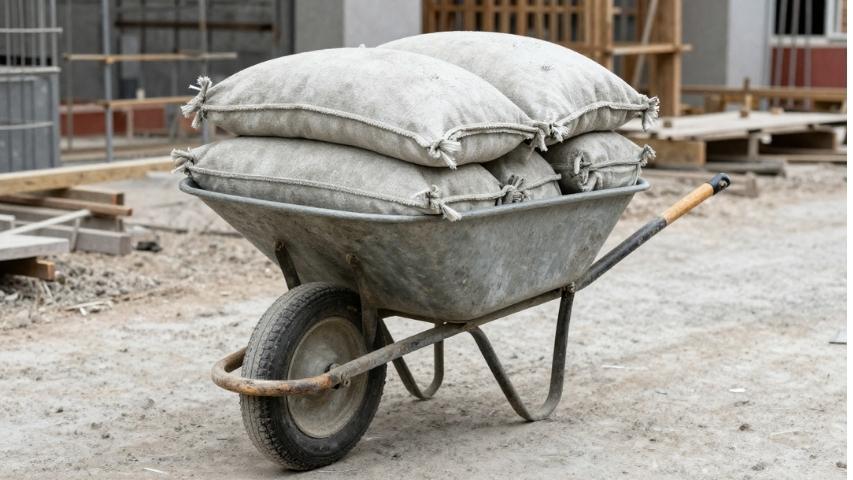When tackling pest control, most don’t think twice about the ingredients stored in our kitchens. Yet, something as familiar as salt plays a surprising role in pest behavior. But does salt attract bugs, and if so, which types are the most enticing? This detailed guide explores the relationship between salt and bugs, factors contributing to attraction, and practical tips to protect your home from pests.
Does Salt Attract Bugs?
Salt, in its pure form, doesn’t typically attract bugs. Most pests seek resources like food, sugary substances, or moisture to survive; they don’t crave salt like humans do. Specific bugs are drawn to environments where salt might be present. This usually happens when salt is mixed with other appealing elements, like food residue.
While salt isn’t a primary attractant for bugs, its presence in specific scenarios may lure certain pests. Some species, like ants or slugs, may inadvertently come into contact with salt due to its placement or moisture-retaining qualities.
Debunking the Myths Around Bugs and Salt
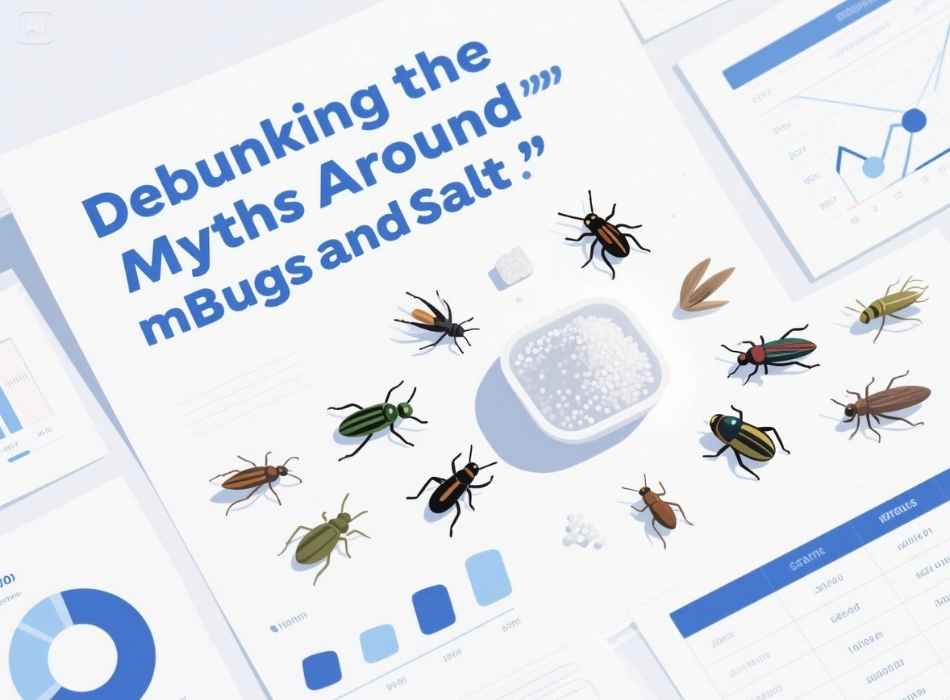
Here are common misconceptions:
- Salt attracts all bugs: While some bugs may come close to salt, most insects aren’t drawn to it specifically.
- Salt is useless for pest control. On the contrary, salt can deter certain pests, such as slugs.
- Salt-perfect baits exist: While you may hear anecdotes about salt’s bug-attracting potential, research suggests it acts more as a neutral agent than a lure.
- Salt-based products are entirely chemical-free: Salt may be a natural substance, but many salt-based pest control products still contain chemical additives.
How Salt Affects Bugs
Now that we’ve dispelled some common myths, let’s dive into how salt affects bugs.
First and foremost, salt is hygroscopic, meaning it absorbs moisture from its surroundings. This characteristic can dehydrate insects and even cause them to die if they come in direct contact with high salt concentrations. However, the effectiveness of this method depends on the type of bug and the amount of salt used.
Additionally, research has shown that salt can be an abrasive agent when applied to insects. This abrasive action can damage the insect’s exoskeleton, causing them to lose moisture and eventually die.
Furthermore, salt can also be used as a deterrent for certain types of insects. For example, ants are known to dislike crossing areas with high salt concentrations, so sprinkling some around entry points or along their trails can help prevent them from entering your home.
However, while salt may have some negative effects on bugs, it is not a foolproof method of pest control. Insects can often adapt to harsh environments and develop resistance to certain substances over time.
Which Bugs May Be Linked to Salt?
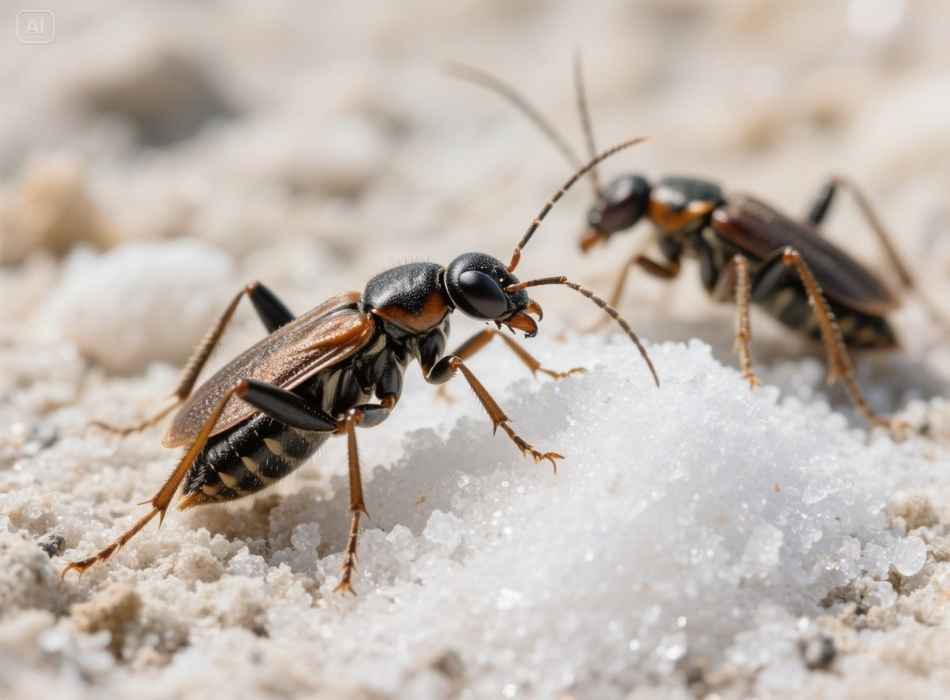
Although salt isn’t every insect’s snack of choice, specific scenarios may explain why it comes into play. Below are a few examples of bugs observed in salty environments or those impacted by salt:
1. Ants and Salt
Ants are often motivated by food, especially sweet or protein-heavy options. Interestingly, research has shown that some species of ants, particularly those dwelling inland and far from natural salt sources, may seek salt for its sodium content as part of their dietary requirements. Coastal ant species show less need to seek sodium, given its abundance in their environment.
What Attracts Them:
- Spilled salty snacks like chips or pretzels.
- Salt is lingering on countertops or food-prep areas.
Prevention Tip: Wipe down surfaces immediately after snack time, and avoid leaving salty crumbs around.
2. Slugs and Salt
Slugs and snails are infamous for their strong reactions to salt. Salt dehydrates them by disrupting their water balance through osmosis. However, they do not actively seek out salty environments and avoid areas high in salinity.
Key Note:
Rather than being attracted, slugs are more commonly repelled by salt.
Prevention Tip: Sprinkle a fine salt line around gardens or entry points to create a slug deterrent. However, use sparingly to avoid harming plant life.
3. Cockroaches Near Salt-Containing Food
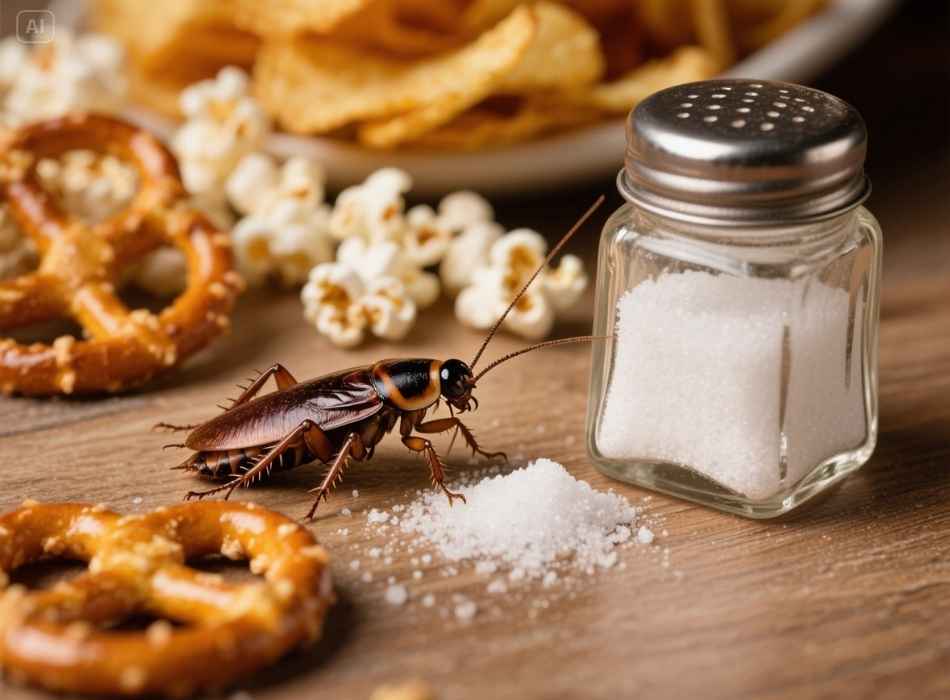
Cockroaches are omnivorous and opportunistic eaters. They won’t typically be drawn to salt alone, but salty foods left uncovered (like pretzels, popcorn, or chips) can attract them.
What Attracts Them:
- Salty leftovers or crumbs.
- Food residue near garbage disposal units.
Prevention Tip: Store salted snacks in airtight containers and clean surfaces regularly after meals.
4. Bugs in Salty Coastal Areas
Coastal regions naturally harbor higher salinity environments. Specific bugs, like sand flies or certain ants, thrive in these sandy, salty conditions. They aren’t necessarily drawn to salt itself, but are accustomed to living in areas where it is prevalent.
Prevention Tip: Control infestations by keeping outdoor spaces like porches and patios clean. Remove any standing water and properly dispose of garbage.
5. Salt in Beauty Products
Salt is commonly used in beauty products for its exfoliating properties. However, it can also adversely affect the skin if not used properly. High salt levels can cause dryness and irritation, especially for sensitive skin.
Prevention Tip: When using salt-based beauty products, thoroughly rinse them off with lukewarm water afterward. If you experience any discomfort or irritation, discontinue use and consult a dermatologist.
6. The Impact of Salt on Wildlife
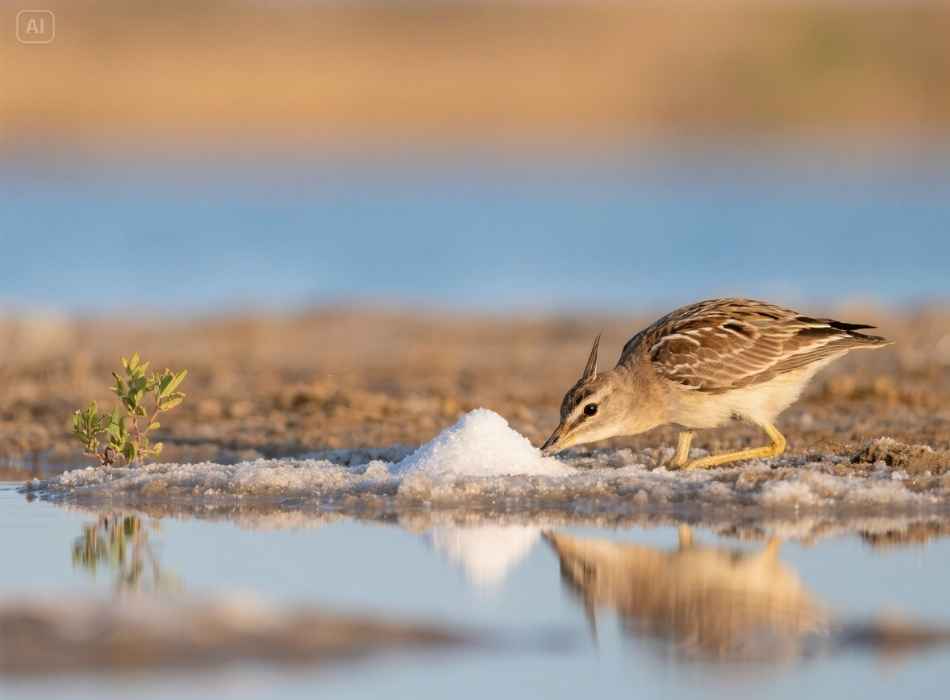
When it accumulates in wildlife’s natural habitats, salt can harm them. It can change the salinity levels of water bodies and soil, making it difficult for plants and animals to survive. Excessive salt intake can also lead to dehydration and harm wildlife’s overall health.
Prevention Tip: Avoid disposing of salt-based products in natural bodies of water or on land where wildlife may contact them. Properly dispose of these products according to their instructions or consult local waste management guidelines. Additionally, opt for natural and eco-friendly alternatives when possible.
7. Sustainable Alternatives to Salt-Based Products
For those looking to reduce their use of salt-based beauty products, many sustainable alternatives are available that are gentle on both skin and the environment. Some options include:
- Natural oils and butters: Instead of using salt-based exfoliators, use natural oils such as coconut or shea butter. These products have moisturizing properties, leaving your skin feeling soft and smooth without harsh chemicals.
- DIY scrubs: Another option is to make your own body scrub using natural ingredients like sugar, coffee grounds, or oats. Many simple recipes are available online that provide gentle yet effective exfoliation.
- Bamboo brushes/sponges: If you prefer physical exfoliation over chemical ones, consider switching to a bamboo brush or sponge. These sustainable materials provide gentle exfoliation without polluting.
Factors That Make Salt Attractive to Bugs
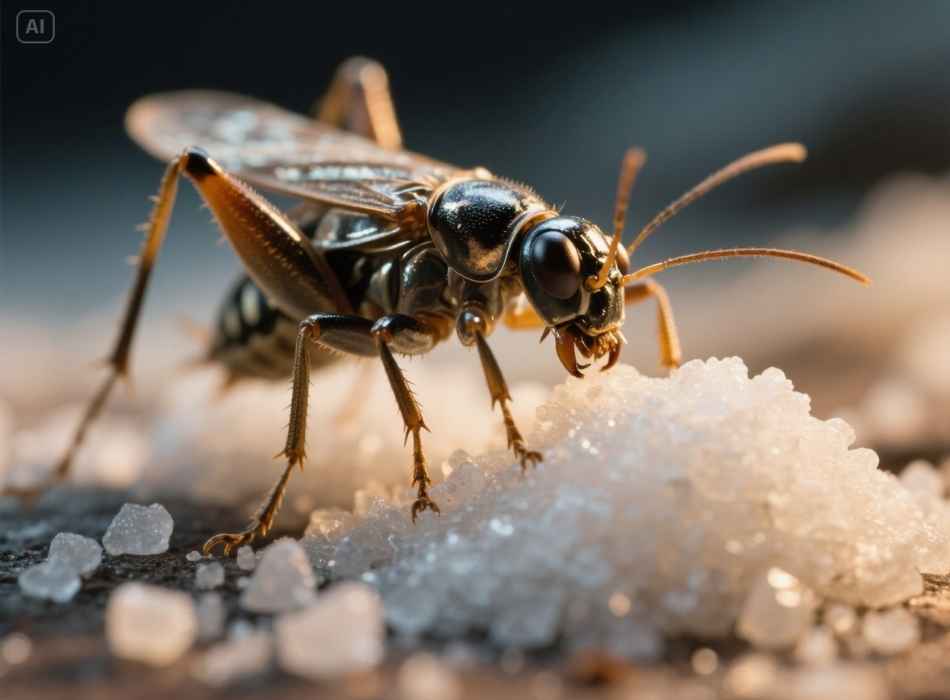
While bugs don’t generally hunt for salt, certain factors involving salt can create an attractive scenario:
Food Residue: Salt left on greasy or sugary items can lure insects searching for food.
Humidity and Moisture: When salt absorbs moisture, it can create a damp environment favorable to pests like cockroaches or ants.
Unsealed Snacks: Salty foods like chips or crackers, if left unsealed, can attract hungry bugs.
Moisture-Seeking Pests: Certain insects, like silverfish or booklice, are attracted to damp environments and may be drawn to salt for its moisture-attracting properties.
Dehydration: Insects need water to survive, and if they ingest too much salt, they can dehydrate. This can lead bugs to seek out sources of moisture near salt deposits.
Salt as a Breeding Ground: Some species of flies and beetles lay their eggs in moist areas with high salt concentrations, creating an ideal breeding ground for future generations.
Scented Salt: Certain flavored salts or seasonings may have added scents that attract insects, making them even more desirable as a food source.
Salt as a Pest Control: While salt can attract some bugs, it can also repel others. Salt can act as a natural barrier against pests like slugs and snails, creating an inhospitable environment for them to cross over.
Not Just for Food: Insects are not the only creatures drawn to salt; larger animals such as deer and cattle may also seek out salt licks to supplement their diets with necessary minerals.
Environmental Impact: Excessive salt use or high salt concentrations in certain areas can negatively affect the surrounding ecosystem and wildlife. Salt runoff from roads, sidewalks, and driveways can contaminate local water sources and harm aquatic life.
Alternative Methods: For those looking to limit their use of salt in the garden, alternative methods can effectively deter pests. These include using physical barriers like netting or copper tape, planting pest-resistant varieties of plants, and implementing companion planting techniques.
Tips to Minimize Attraction
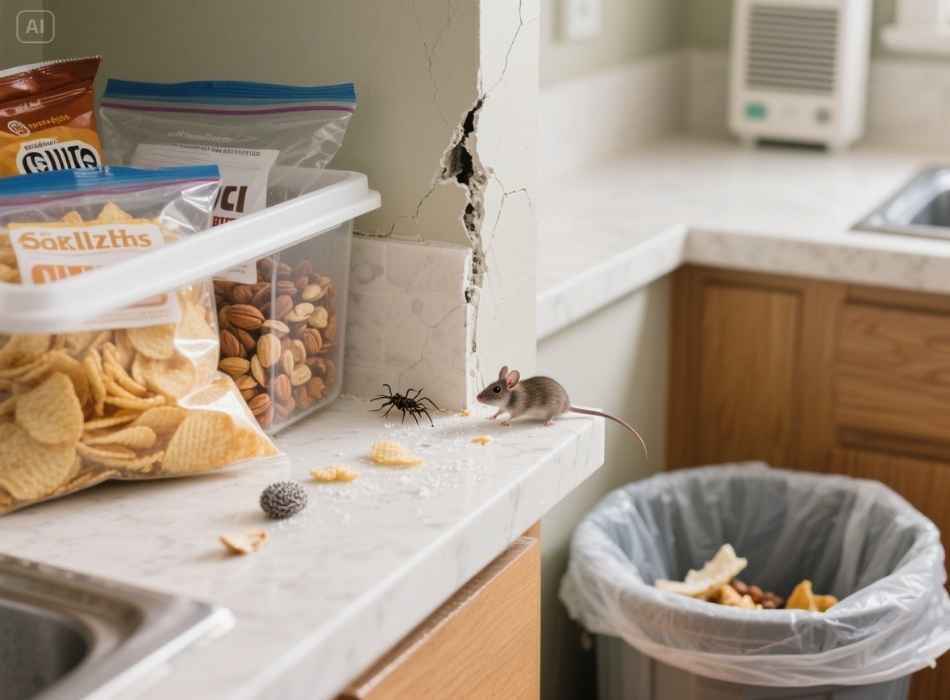
- Store Food Properly: Place all salty snacks, like chips and nuts, in sealed containers or bags.
- Clean Surfaces: A quick wipe-down after eating prevents residue build-up.
- Control Moisture: Use a dehumidifier in humid areas where salt might interact with air moisture. This will prevent the attraction of moisture-loving pests.
- Seal Cracks and Holes: It is important to inspect your home for small cracks and holes where insects or rodents might be able to enter. Seal any openings you find with silicone caulk, steel wool, or expanding foam.
- Proper Waste Disposal: Remove trash regularly and tightly seal garbage cans. Avoid leaving food scraps in the sink or on countertops.
Natural Pest Control
In addition to prevention methods, there are natural ways to control pests in and around your home. These methods are safe for both humans and the environment.
Essential Oils: Certain essential oils have strong scents that can repel pests. Some of the most effective oils include peppermint, lavender, and eucalyptus. Mix a few drops of these oils with water and spray around the areas where pests are present.
Diatomaceous Earth: This utterly natural substance is made from fossilized algae. It punctures insects’ exoskeletons, causing them to dehydrate and die. Sprinkle diatomaceous earth in areas where pests frequent or create a barrier around your home’s perimeter.
Beneficial Insects: Not all insects are pests! Specific bugs help control pest populations. Ladybugs, praying mantises, and lacewings are all examples of beneficial insects that feed on pests. Consider attracting these helpful creatures to your garden by planting flowers or providing shelter.
Plant Companion:ship: Certain plants have natural pest-repellent properties and can be companions for other plants. For example, marigolds emit a scent that repels certain pests, making them great companions for vegetables like tomatoes and cucumbers. Research which plants work well together to deter pests in your garden.
Can Salt Be Used as a Pest Control Tool?
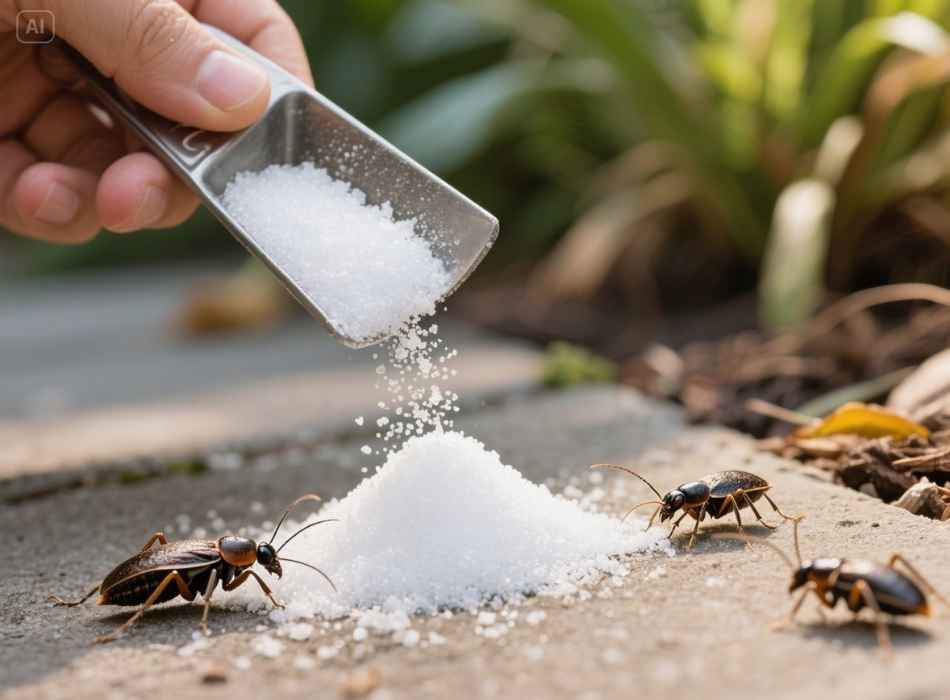
Interestingly, while salt isn’t a universal pest attractant, it can effectively deter certain pests. Here’s how you can use it:
1. Slug and Snail Deterrent
Salt is famously used to repel slugs and snails. By sprinkling salt around vulnerable garden areas, you can create an inhospitable environment that keeps these mollusks at bay.
2. Natural Ant Barrier
Mix saltwater solution and spray it along ant entry points, like windowsills and doors. It won’t kill ants, but it can be a temporary deterrent.
3. Cleaning Agent Against Pests
Salt mixed with water can scrub areas prone to pest activity, such as countertops and sinks. This eliminates food residue and helps reduce attraction.
Common Questions and Misconceptions About Salt and Bugs
Is salt an attractant for bed bugs?
No, salt does not attract bed bugs. Bed bugs are attracted to warmth and carbon dioxide from humans, not salt.
Can sprinkling salt trap pests?
No, salt isn’t sticky or poisonous enough to trap pests. It is better suited for deterring specific creatures like slugs or as part of a cleaning routine.
Does salt kill cockroaches or ants?
While salt can dehydrate certain small insects, it is not an effective extermination method for cockroaches or ants in most cases. Opt for professional pest control products for efficient eradication.
Protecting Your Home From Bugs
If you want to safeguard your home from pests, keeping food adequately sealed, maintaining cleanliness, and controlling moisture levels are your best lines of defense. While salt doesn’t naturally attract bugs, ensuring it doesn’t mix with food residue or dampness is key to preventing unwanted visitors.
Understanding insects and their behavior can help you make better pest control decisions. Interested in natural methods for pest prevention? Continue exploring our blog for more home-friendly solutions!










